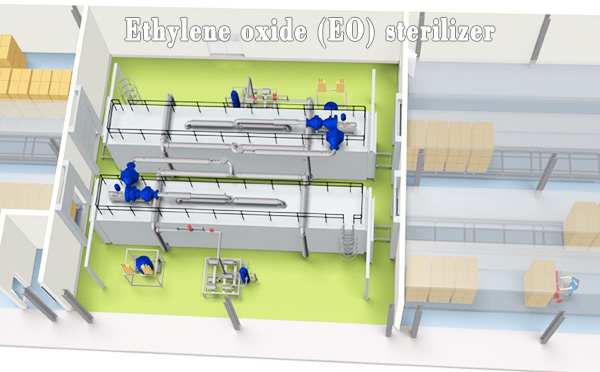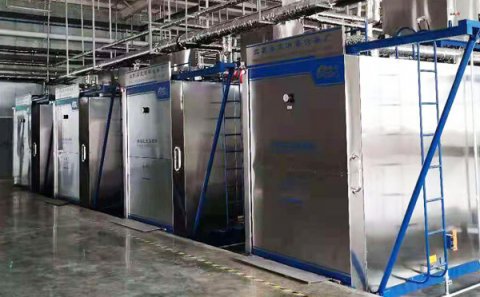
The concentration of ethylene oxide is a factor affecting the sterilization quality.
The most common concentration range is 450-1200mg / L.
With the increase of temperature, the sterilization effect of ethylene oxide is strengthened, and the sterilization temperature is generally 35 ℃ - 60 ℃.
The water content of the sterilized articles, the drying environment of the microorganism itself and the relative humidity of the sterilization environment have a significant impact on the sterilization of ethylene oxide, the most common relative humidity is 45% - 75%; the sterilization time is generally 105-300min. These factors directly affect the success and failure of sterilization. Only when the four key factors reach a balance, can the quality of sterilization be guaranteed.
Package contents meet sterilization requirements
The package, loading, sterilization treatment and external protection of bacteria also affect the sterilization effect. The surface properties and thickness of the packaging materials have influence on the sterilization effect. The materials that are easy to penetrate and have little residue should be selected. Although ethylene oxide has strong penetrability to the articles and can penetrate the micropores to reach the deep part of the articles, the penetrability of ethylene oxide gas to the articles is also different due to the different density degree of different substances. Therefore, when choosing the packaging materials for disinfection or sterilization articles, we should not only consider the beautiful, light, sealed, economic and other factors of the packaging, but also see whether it is good or not It can be penetrated by ethylene oxide gas, so that the package content can meet the sterilization requirements.
Sterilized articles shall be thoroughly cleaned and properly pre wetted.
Disinfection and cleaning is an important link that can not be ignored before sterilization, especially reusable items and equipment, which need to be thoroughly cleaned and rinsed to remove mucous membranes, bloodstains or other organic matters. Any residual substance will hinder the effective contact between microorganism and ethylene oxide gas, and even cause bacteria to produce protective film and affect the sterilization effect. Therefore, the contaminated articles must be washed carefully with water and soaked with enzyme for more than 5min.
Loading of ethylene oxide sterilizer
The ETO sterilizer should always be loaded with a loading basket or shelf. Do not overload. Organize the items in the loading basket to ensure the smooth flow of water vapor and EtO between the items. Stand upright. Place the package so that the transparency of a paper plastic bag faces the opaque side of the adjacent bag. Ensure that the device does not touch the walls of the chamber.
Preparation and packaging of articles before sterilization
The articles to be sterilized must be thoroughly cleaned, and it should not be washed with normal saline. There should be no water drop or too much water on the sterilized articles to avoid dilution and hydrolysis of ethylene oxide. Ethylene oxide can be used for sterilization of almost all medical products, but it is not suitable for sterilization of food, liquid, oil, talcum powder and animal feed. The packaging materials suitable for ethylene oxide sterilization include paper, composite dialysis paper, cloth, non-woven fabric, ventilating rigid container, polyethylene, etc.; the packaging materials not suitable for ethylene oxide sterilization include metal foil, PVC, cellophane, nylon, polyester, polyvinylidene chloride, and impermeable polypropylene. The change of packaging materials shall be verified to ensure the reliability of sterilization of sterilized articles.









Comments: